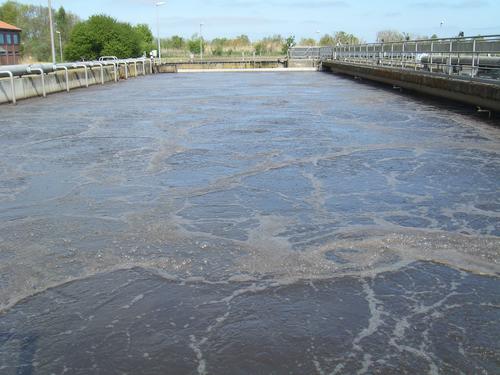Secondary Treatment
During secondary treatment, up to 90 % of the organic matter in wastewater can be remove by using biological treatment processes. Bacteria and other small organisms in the wastewater consume organic matter, turning it into new bacterial cells, carbon dioxide, energy and other by-products. There are many different types of secondary processes. The main difference exists between aerobic and anaerobic treatment. The advantage of anaerobic treatment are the lower energy requirements and sludge production which makes the processes simpler and cheaper. Disadvantages are the more time consuming procedure and the less efficient effect, removing only organic waste but no other pollutants like nutrients or pathogens. However, most conventional treatment plants use aerobic treatment procedures (activated sludge treatment). With the addition of oxygen to wastewater, masses of microorganisms grew and rapidly metabolized organic pollutants. Any excess microbiological growth could be removed from the wastewater by physical processes. There are two different systems aerobic treatment is implemented, attached growth and suspended growth. In attached growth processes, the microbial growth occurs on the surface of a media. Wastewater passes over the media along with air to provide oxygen. In suspended growth processes, the microbial growth is suspended in an aerated water mixture where the air is pumped in, or the water is agitated sufficiently to allow oxygen transfer. Suspended growth process units include variations of activated sludge, oxidation ditches and sequencing batch reactors.
(Parr et al. 1999 & EPA 2004)
